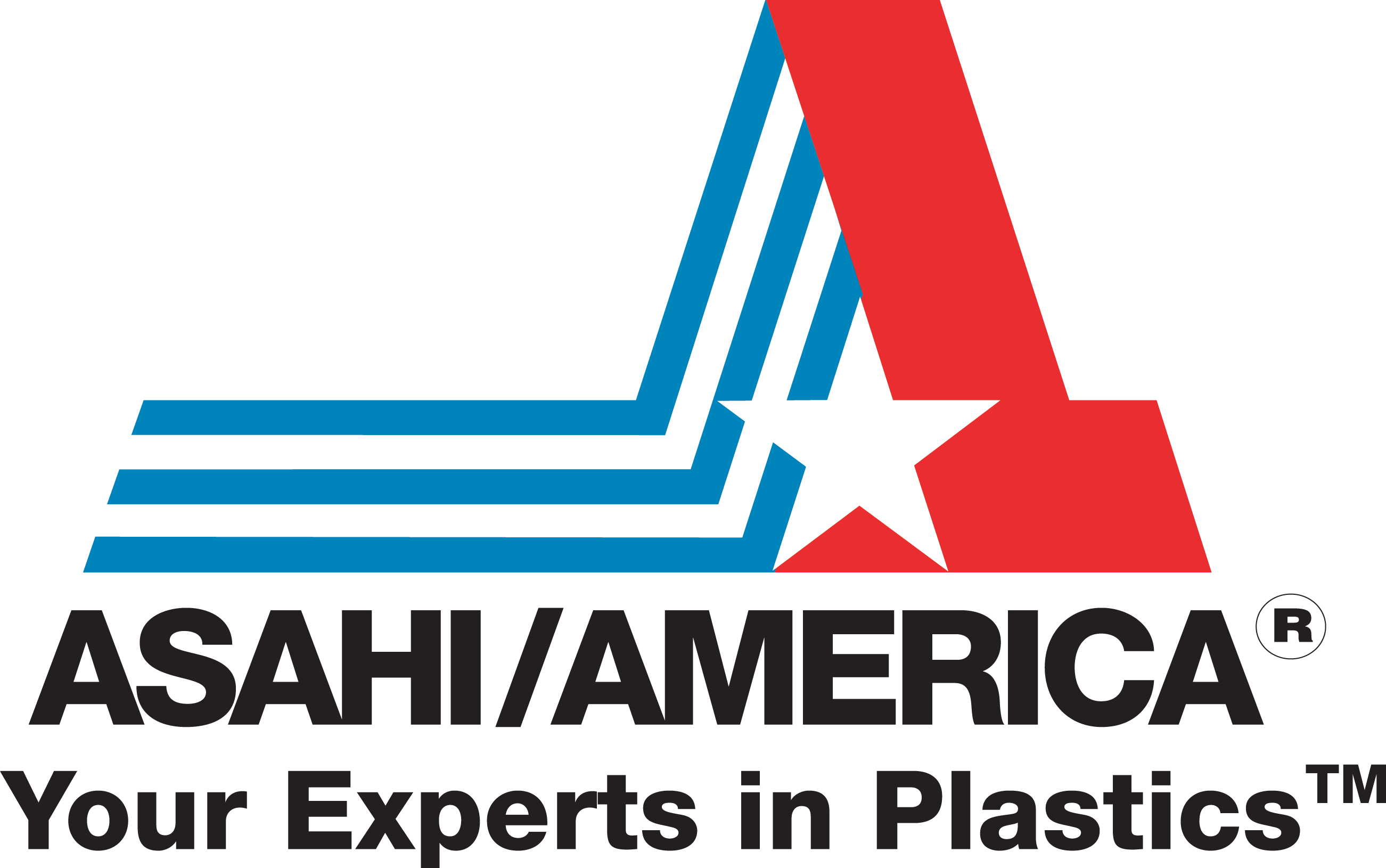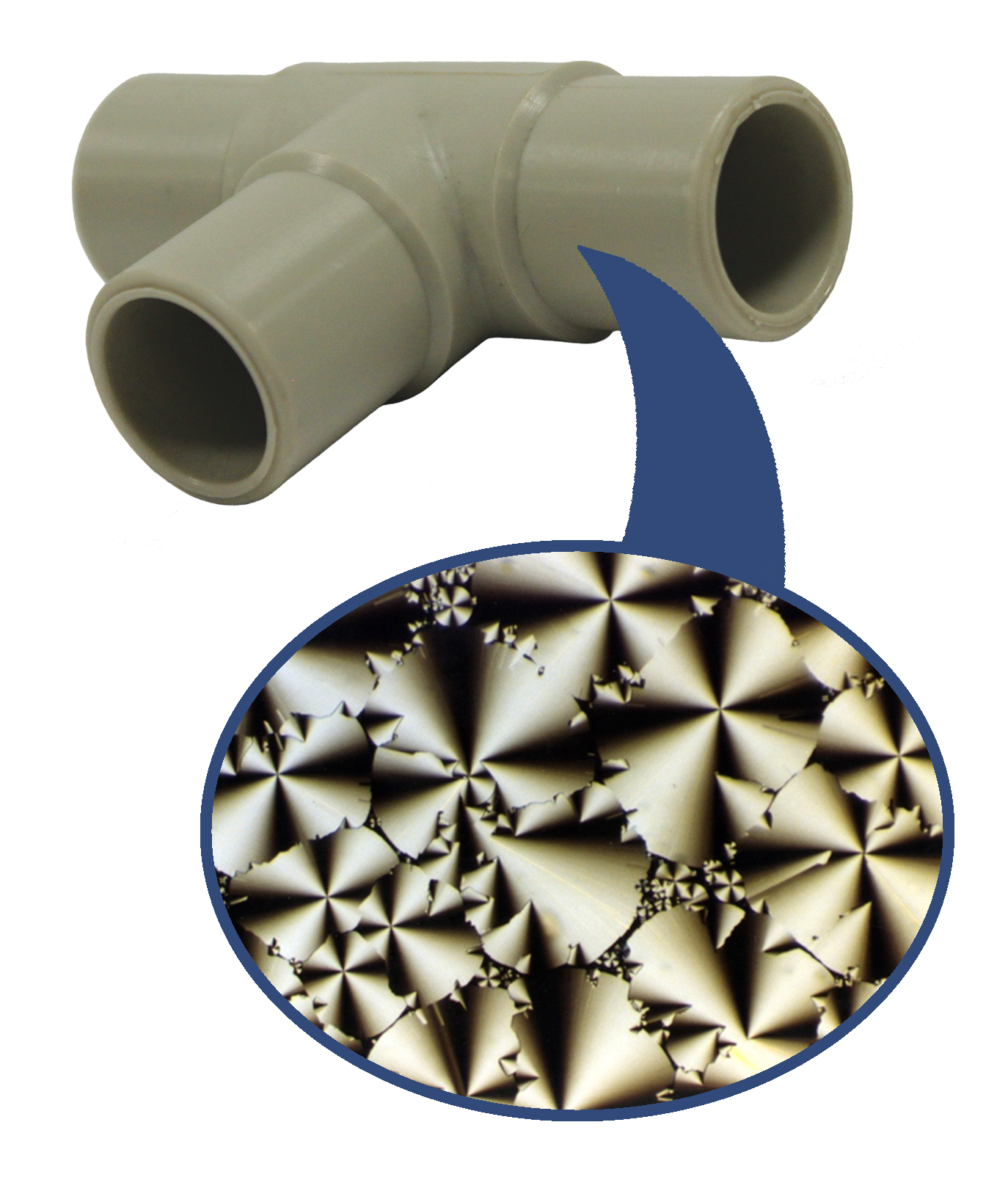

August 1, 2023
Inner Circle
Demystifying Polypropylene
Contributed by Josh Goldberg, Business Development Manager (Automotive, Chemical, and Mining)
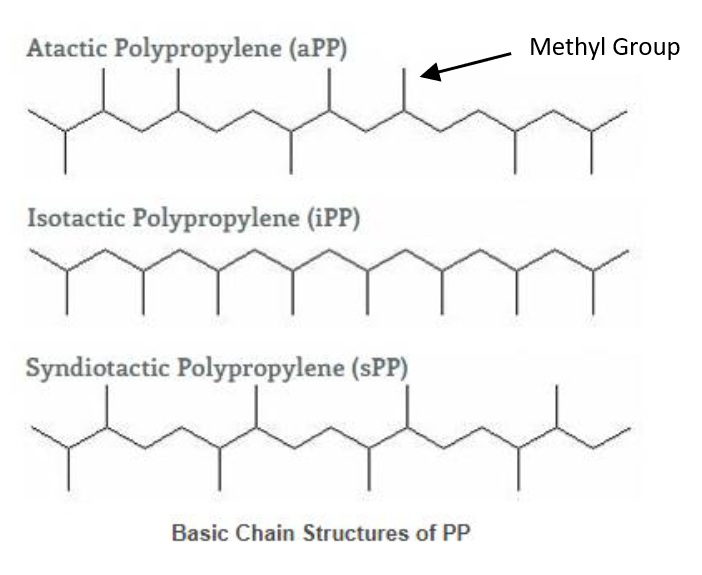
The world of polymers can sometimes be confusing with all the different types of plastic. To make things even more confusing, a polymer can sometimes take on different properties when made into a copolymer. Adding to the level of confusion, the way a polymer crystallizes can also affect its final properties. Polypropylene (PP) is one such simple plastic that can transform significantly depending on its crystalline structure and copolymer content. It is a plastic common throughout our daily lives to the point where we no longer pay attention to its existence. Part of the reason is that polypropylene has so many different grades and types that it is hard to recognize anymore. For the discussion here and for the sake of brevity, we will narrow the scope of polypropylene down to the world of pipes.
First, let’s start with PP’s crystalline content and structure and how it affects the final properties. Typically, you will see PP with a crystalline content >90% for pipes because the more crystalline the material is, the better the physical properties. The high crystallinity is needed to handle demanding environments and transport pressurized chemicals. To make crystals, polypropylene needs to have a high degree of order. Atactic PP is unsuitable for crystalline formation due to the polymer’s randomness (low degree of order). Syndiotactic PP is more ordered, but the alternating methyl group on the carbon chain severely limits the ability to form significant 3-dimensional crystals. Isotactic PP is the best arrangement for significant crystal growth.
Isotactic PP (iPP) makes a specific shape that can fit together differently. The three different types of crystalline structures that isotactic PP can make are a, b, and g. We can disregard the gamma structure since it is unstable under normal conditions and wouldn’t be in bulk in a pipe or valve. The alpha and beta phases will make up the bulk of most pipe materials. There are some differences between the different phases, as noted in the comparison table below:

The properties are about the same when you look at them side by side, with (BETA)-iPP (isotactic, beta crystal, polypropylene) having a significantly better impact strength, as indicated by the Notched Izod test numbers. The visual difference between the two samples during the necking stress test is also apparent.
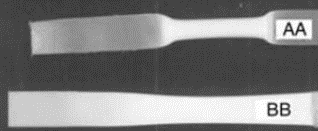
The different ways the materials thin as they stretch are quite noticeable in the picture to the left. AA (a-iPP) thins out quite a bit along the neck area prior to breaking. BB (b-iPP) thins out as well, but it occurs along the length of the sample and not just in a single, localized area. These properties are important because they will tell you if the material will act more elastically (b-iPP) or in a more rigid fashion (a la a-iPP). The material’s elasticity will determine how well it handles “sharp blows” in the field. All of these properties are something to consider when choosing the type of PP you want to use.
The next choice is whether the polypropylene you want is a “homopolymer” or a “copolymer,” and what type of copolymer would be best for your application. Firstly, a homopolymer is a polymer that consists of just one specific monomer (the building block of the polymer). A copolymer is a polymer that consists of more than one type of monomer. There are four general ways that you can make a copolymer:
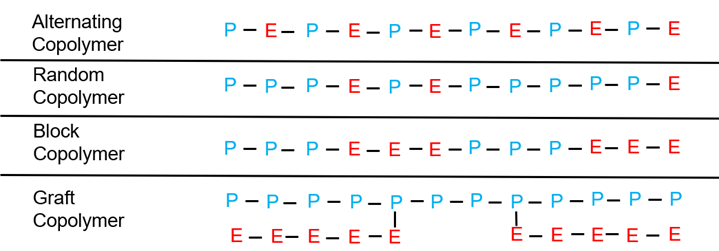
Alternating copolymers of polyethylene (PE) and polypropylene (PP) in a 50/50 ratio are usually too flexible and don’t form crystals well, so that type isn’t used for pipes. Block copolymers containing anywhere from 5% to 15% PE can be arranged in regular block patterns, which creates a material with a high impact strength with industrial uses, but still not typically in pipes. Graft copolymers are usually seen in membranes where an “active” polymer is grafted onto a film or fabric, though you will not see this type of polymer in pipes. The random copolymer construction is the one we see in pipes, and the materials contain up to 6% PE randomly incorporated into the PP. This type of construction controls crystal growth and produces tiny, more uniform crystals through the material. The material changes are very apparent in the notched impact strength test, where the results can be up to 10x higher than the homopolymer. The following chart shows a comparison between the homopolymer and the random copolymer:

The properties of the PP random copolymer make a good compliment to the PP homopolymer, especially when used in pipes. The random copolymer provides a more elastic, higher impact strength material for areas where bumps and knocks are a higher probability. Additionally, the random copolymer can provide better stress crack resistance under lower operating temperatures if the environment is a factor.
Polyethylene is the simplest of polymer structures, and it is amazing just how much complexity is added to a molecule by just adding a “methyl” group. Jumping from polyethylene to polypropylene introduces a whole new world of a- and b-crystals, each with their own unique properties and uses. We also saw those different types of polyethylene, whether homopolymer (PP-H) or random copolymer (PP-R), offer some unique benefits that we are happy to discuss with you in more detail.
This article has explored some of the intricacies and advancements in polypropylene. We’ve looked at some key aspects of polymers and copolymers, and discussed the potential impact of these innovations, however, understanding the foundation is just the beginning. To truly harness the power of these advancements and turn them into tangible benefits for your organization, you need a partner who not only comprehends the intricacies of thermoplastics, and their applications, but also has a proven track record of translating technical possibilities into real-world solutions.
The article here is just the tip of the iceberg, but if you want to know more information, have questions, or would like recommendations, please feel free to contact Josh Goldberg at jgoldberg@asahi-america.com or Asahi/America directly to set up a Lunch & Learn.
Asahi/America carriers a full range of polypropylene valve and piping systems used in a wide variety of chemical applications. To learn more, visit our website at www.www.asahi-america.com.
EDITOR’S NOTICE: Please note, the information in this article is for educational purposes only and does not supersede any Asahi/America technical information or product specifications. Please consult Asahi/America’s technical department at 1-800-343-3618 or pipe@asahi-america.com on all product applications in regards to material selection based on the pressure, temperature, environmental factors, chemical, media, application, and more.
